Read what ‘Black Tide’ filmmaker Steven Johnson has to say about his documentary
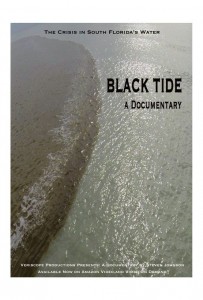 A documentary looking into the causes of and solutions to Southwest Florida’s water crisis will open this year’s Fort Myers Film Festival. Titled Black Tide, the 50-minute film was written, directed and produced by Steven Johnson, who grew up in Southwest Florida.
A documentary looking into the causes of and solutions to Southwest Florida’s water crisis will open this year’s Fort Myers Film Festival. Titled Black Tide, the 50-minute film was written, directed and produced by Steven Johnson, who grew up in Southwest Florida.
“I make political and environmental films,” Johnson declares in his Director’s Statement about the film. “Frustrated by seeing the environmental devastation in our estuaries caused by the political power of Big Sugar and poor water management decisions, I decided to make this documentary. I worked on it on and off for almost ten years, while working on other projects. And with its release, South Florida is seeing 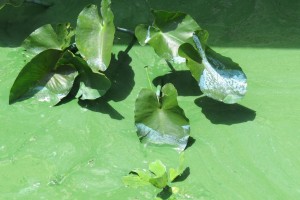 one of the worst seasons of pollution in many years due to the reasons laid out in this film.”
one of the worst seasons of pollution in many years due to the reasons laid out in this film.”
Last year, freshwater releases from Lake Okeechobee caused historic blue-green algae blooms in the St. Lucie River and its estuaries, as well as smaller, but no less lethal, blooms along the Caloosahatchee and in Cape Coral’s intricate network of canals. The situation became so dire in 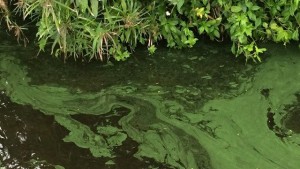 June and July that Governor Rick Scott issued states of emergency for St. Lucie, Martin and Lee counties, whose hotels, restaurants and tourist attractions lost thousands of dollars in lost revenues as tourists and summer visitors cancelled planned visits.
June and July that Governor Rick Scott issued states of emergency for St. Lucie, Martin and Lee counties, whose hotels, restaurants and tourist attractions lost thousands of dollars in lost revenues as tourists and summer visitors cancelled planned visits.
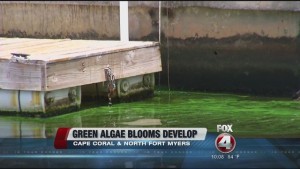 The blooms started in Lake Okeechobee and were carried into both rivers when the Army Corps of Engineers released water from Lake Okeechobee in order to reduce the level of the lake, thereby taking pressure off the dike built nearly 90 years ago to protect Clewiston, Pahokee, Belle Glade, Moore Haven and neighboring towns from flooding like that
The blooms started in Lake Okeechobee and were carried into both rivers when the Army Corps of Engineers released water from Lake Okeechobee in order to reduce the level of the lake, thereby taking pressure off the dike built nearly 90 years ago to protect Clewiston, Pahokee, Belle Glade, Moore Haven and neighboring towns from flooding like that 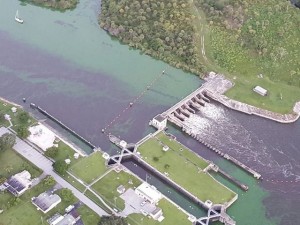 which occurred when the great hurricane of 1928 drowned between 2,500 and 3,000 people living south of the lake. Besides algae, those releases carried high levels of fertilizer and other nutrients from farmlands to the north and sugar cane fields to the south of the lake which fueled even larger blooms in the Caloosahatchee and St. Lucie rivers and their estuaries.
which occurred when the great hurricane of 1928 drowned between 2,500 and 3,000 people living south of the lake. Besides algae, those releases carried high levels of fertilizer and other nutrients from farmlands to the north and sugar cane fields to the south of the lake which fueled even larger blooms in the Caloosahatchee and St. Lucie rivers and their estuaries.
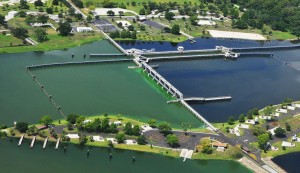 That fertilizer and the suspended solids in those Lake O discharges do more harm, than stimulate algae blooms and growth. They turn the water in the rivers the color of coffee, and that murkiness blocks sunlight, killing off the sea grasses the river once supported while the high nitrogen content renders the rivers and beaches down river unsafe
That fertilizer and the suspended solids in those Lake O discharges do more harm, than stimulate algae blooms and growth. They turn the water in the rivers the color of coffee, and that murkiness blocks sunlight, killing off the sea grasses the river once supported while the high nitrogen content renders the rivers and beaches down river unsafe 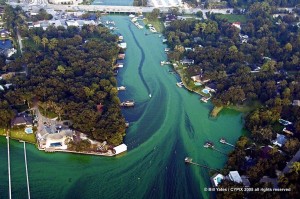 for swimming and fishing. These pollutants have been shown to be particularly harmful to aquatic resources and water quality whenever they exceed 2,800 cubic feet per second. During last summer’s historic algae blooms, the Army Corps was releasing more than 4,000 cfs into the Caloosahatchee and St. Lucie notwithstanding the damage it was causing downstream.
for swimming and fishing. These pollutants have been shown to be particularly harmful to aquatic resources and water quality whenever they exceed 2,800 cubic feet per second. During last summer’s historic algae blooms, the Army Corps was releasing more than 4,000 cfs into the Caloosahatchee and St. Lucie notwithstanding the damage it was causing downstream.
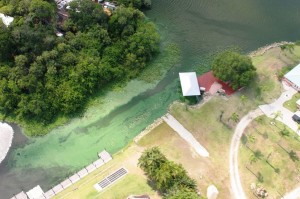 It’s not just marine life that’s adversely affected by blue-green algae blooms. The algae produces toxins that kill wildlife and cause human health effects that include respiratory and serious nervous system disorders. There are even a plethora of studies that suggest that the poor water quality in Lake Okeechobee, Caloosahatchee and St. Lucie Rivers is causing incidents of leukemia and other
It’s not just marine life that’s adversely affected by blue-green algae blooms. The algae produces toxins that kill wildlife and cause human health effects that include respiratory and serious nervous system disorders. There are even a plethora of studies that suggest that the poor water quality in Lake Okeechobee, Caloosahatchee and St. Lucie Rivers is causing incidents of leukemia and other 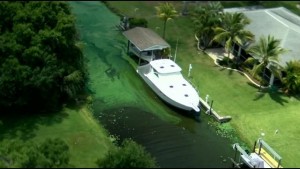 forms of cancer in children and adolescents living south of these waterways that is five times the rate experienced in the rest of the state.
forms of cancer in children and adolescents living south of these waterways that is five times the rate experienced in the rest of the state.
“For fifty years, Lake Okeechobee, the liquid heart of the state of Florida, has served as a dumping 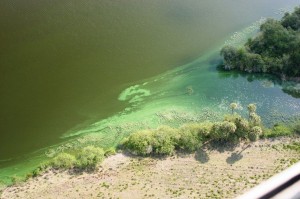 ground for agricultural interests, especially the sugar industry,” states Veriscope Productions in its synopsis of Black Tide. Of course, the sugar cane fields flood during the torrential downpours South Florida experiences from time to time, especially between June and September. To protect the cane and allow them to harvest it, growers pump the standing water into Lake Okeechobee. Besides muck,
ground for agricultural interests, especially the sugar industry,” states Veriscope Productions in its synopsis of Black Tide. Of course, the sugar cane fields flood during the torrential downpours South Florida experiences from time to time, especially between June and September. To protect the cane and allow them to harvest it, growers pump the standing water into Lake Okeechobee. Besides muck, 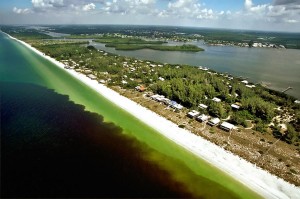 this water is filled with fertilizer, pesticides and an array of other chemicals. The sediment eventually settles onto the shallow lakebed in layers of muck. But it does not stay there for long.
this water is filled with fertilizer, pesticides and an array of other chemicals. The sediment eventually settles onto the shallow lakebed in layers of muck. But it does not stay there for long.
“After a devastating hurricane in the 1920s, the Army Corps. of Engineers built a dike on the southern end of the lake, stopping the natural flow of freshwater into the 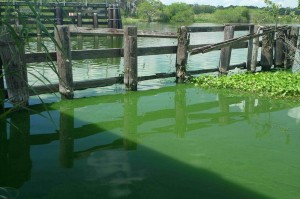 Everglades and causing lasting environmental damage to the iconic national park,” the Veriscope synopsis continues. “To make matters worse, the dike is poorly engineered, and now when the lake levels get too high, the Army Corps fears the dike will break, causing a Katrina-like catastrophe in the small farming towns around the lake. The Army Corps’
Everglades and causing lasting environmental damage to the iconic national park,” the Veriscope synopsis continues. “To make matters worse, the dike is poorly engineered, and now when the lake levels get too high, the Army Corps fears the dike will break, causing a Katrina-like catastrophe in the small farming towns around the lake. The Army Corps’ 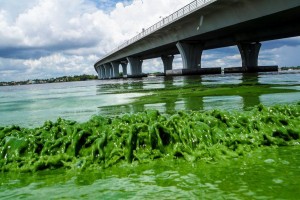 solution is to pump the polluted water into two rivers, one going east to an estuary on the Atlantic coast, and one going west to an estuary on the Gulf coast. These discharges create a ‘black tide’ that devastates marine life and causes billions of dollars of economic damage.”
solution is to pump the polluted water into two rivers, one going east to an estuary on the Atlantic coast, and one going west to an estuary on the Gulf coast. These discharges create a ‘black tide’ that devastates marine life and causes billions of dollars of economic damage.”
Some, including Florida’s governor, argue that the solution is to fix 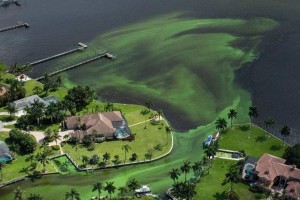 the Herbert Hoover Dike. There is no doubt that the dike protecting the land surrounding Lake Okeechobee from flooding needs to be repaired as promptly as possible to protect public health and safety. But that alone will not eliminate releases of fresh water from Lake Okeechobee. Even after the dikes are repaired and reinforced, the Army Corps of Engineers will not store
the Herbert Hoover Dike. There is no doubt that the dike protecting the land surrounding Lake Okeechobee from flooding needs to be repaired as promptly as possible to protect public health and safety. But that alone will not eliminate releases of fresh water from Lake Okeechobee. Even after the dikes are repaired and reinforced, the Army Corps of Engineers will not store 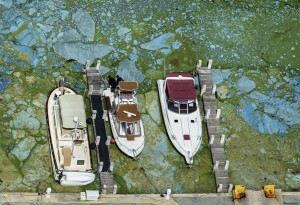 more water in the lake. First, if the water level is allowed to rise above 15.5 feet, vegetation at the bottom of the lake will die, resulting in poorer water quality, algae blooms, fish kills and other ecological losses. Secondly, there is a practical limit to how quickly the lake’s water level can be reduced in the event of period of heavy rainfall or tropical system. Therefore, the Army Corps of Engineers has stated
more water in the lake. First, if the water level is allowed to rise above 15.5 feet, vegetation at the bottom of the lake will die, resulting in poorer water quality, algae blooms, fish kills and other ecological losses. Secondly, there is a practical limit to how quickly the lake’s water level can be reduced in the event of period of heavy rainfall or tropical system. Therefore, the Army Corps of Engineers has stated 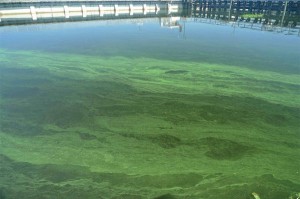 that it will continue to release water into the Caloosahatchee and St. Lucie Rivers when the water level rises above 14 feet even after the dike has been repaired and reinforced.
that it will continue to release water into the Caloosahatchee and St. Lucie Rivers when the water level rises above 14 feet even after the dike has been repaired and reinforced.
The solution is not to use Lake Okeechobee as a reservoir, but to build a reservoir to the south in the Everglades Agricultural Area so that when lake 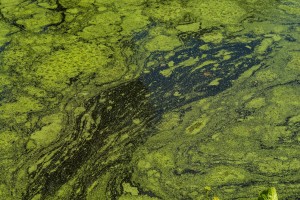 levels are high, the excess water can be shunted south rather than discharged into the Caloosahatchee and St. Lucie Rivers. From there, water will be directed south through the Everglades to Florida Bay as occurred naturally prior to development in and around the lake. That said, the water flowing into Lake Okeechobee has to be adequately cleansed before it can be released into Everglades
levels are high, the excess water can be shunted south rather than discharged into the Caloosahatchee and St. Lucie Rivers. From there, water will be directed south through the Everglades to Florida Bay as occurred naturally prior to development in and around the lake. That said, the water flowing into Lake Okeechobee has to be adequately cleansed before it can be released into Everglades 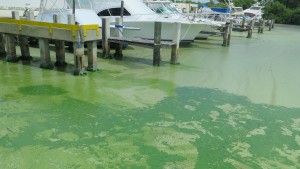 National Park and Florida Bay. This will require one or more retention areas north of Lake Okeechobee that are designed to capture, store and filter farm runoff before it flows through Lake Okeechobee and into the Everglades Agricultural Area reservoir to the south of the lake. Additional marshes are needed in the EAA for
National Park and Florida Bay. This will require one or more retention areas north of Lake Okeechobee that are designed to capture, store and filter farm runoff before it flows through Lake Okeechobee and into the Everglades Agricultural Area reservoir to the south of the lake. Additional marshes are needed in the EAA for 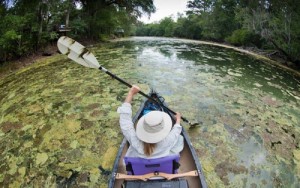 filtration purposes.
filtration purposes.
Obviously, a considerable amount of land will be needed for the creation of these reservoirs, marshes and attendant flow paths. Multiple scientific studies have concluded that the State of Florida must purchase enough land to hold at least 1.2 million acre-feet of water just in the Everglades 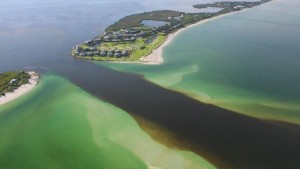 Agricultural Area.
Agricultural Area.
“Even with maximum storage north of the Lake, these studies show that land south of the lake in the EAA is absolutely essential to opening up the bottleneck to move the water south to CERP projects and then onto the Everglades and Florida Bay,” 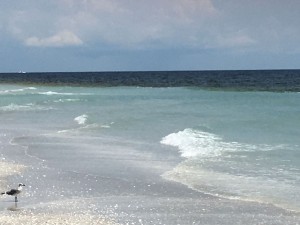 states the Conservancy of Southwest Florida in its white paper about the impacts from Lake Okeechobee flows and the need to buy EAA lands to divert flow south.
states the Conservancy of Southwest Florida in its white paper about the impacts from Lake Okeechobee flows and the need to buy EAA lands to divert flow south.
The 142-page 2015 University of Florida Water Institute Study strongly suggests that an even bigger reservoir, wider flow paths and additional filtration areas within the Everglades Agricultural 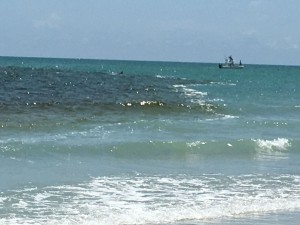 Area will be needed. This study was commissioned by the 2014 Florida Senate to review of options to reduce high volume freshwater flows to the St. Lucie and Caloosahatchee estuaries and move more water from Lake Okeechobee to the Everglades in response to stakeholder concerns about the timing and completion of South Florida Ecosystem restoration. Specifically, the interdisciplinary UF Technical Review Team was charged with
Area will be needed. This study was commissioned by the 2014 Florida Senate to review of options to reduce high volume freshwater flows to the St. Lucie and Caloosahatchee estuaries and move more water from Lake Okeechobee to the Everglades in response to stakeholder concerns about the timing and completion of South Florida Ecosystem restoration. Specifically, the interdisciplinary UF Technical Review Team was charged with 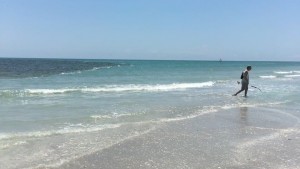 reviewing existing documents that have set forth plans and projects to:
reviewing existing documents that have set forth plans and projects to:
- reduce regulatory discharges from Lake Okeechobee to the St. Lucie and Caloosahatchee estuaries and increase the flow of water from the lake to the southern Everglades;
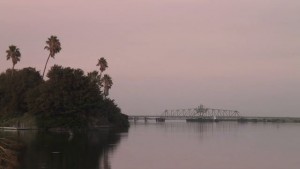 identify scientific, engineering, legal and institutional constraints to implementing the identified plans and projects; and
identify scientific, engineering, legal and institutional constraints to implementing the identified plans and projects; and- formulate options for accelerated and more effective protection of the estuaries and restoration of the Everglades.
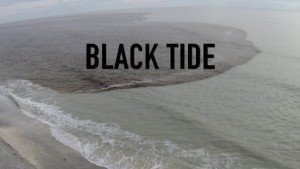 Why isn’t this being done? Black Tides’ writer, director and producer has a theory. “Because agricultural interests, led by Big Sugar, spend enormous amounts of money lobbying and donating to both state and federal politicians, especially Republicans, who control all aspects of Florida’s government. In Black Tide, we
Why isn’t this being done? Black Tides’ writer, director and producer has a theory. “Because agricultural interests, led by Big Sugar, spend enormous amounts of money lobbying and donating to both state and federal politicians, especially Republicans, who control all aspects of Florida’s government. In Black Tide, we  investigate the ongoing problems with the state’s water policies and water politics. It’s an environmental story, but also an economic one and time is running short, as the Everglades and two important estuaries slowly die, taking an entire marine ecosystem with them.”
investigate the ongoing problems with the state’s water policies and water politics. It’s an environmental story, but also an economic one and time is running short, as the Everglades and two important estuaries slowly die, taking an entire marine ecosystem with them.”
Along with South Florida’s entire tourism industry and  related economy.
related economy.
February 20, 2017.
RELATED POSTS.
- Lake O discharge documentary, ‘Black Tide,’ to open Fort Myers Film Festival
- Meet ‘Black Tide’ writer, director and producer Steven Johnson
 How the Everglades, Caloosahatchee and St. Lucie got so bad
How the Everglades, Caloosahatchee and St. Lucie got so bad- Overview of the 7th Annual Fort Myers Film FestivalWhy you should see ‘Bubbles’
- How ‘Bubbles’ got made
- Meet ‘Bubbles’ screenwriter and maniacal clown Cesar Aguilera
 Why you should see ‘The Radical Jew’
Why you should see ‘The Radical Jew’- ‘Radical Jew’ awards and accolades
- Why you should see ‘The Stairs’
- Why the filmmakers made ‘The Stairs’
- Why you should see ‘Three Wishes’ at this year’s Fort Myers Film Festival
- Meet ‘Three Wishes’ writer, director and producer Curtis Collins














 Tom Hall is both an amateur artist and aspiring novelist who writes art quest thrillers. He is in the final stages of completing his debut novel titled "Art Detective," a story that fictionalizes the discovery of the fabled billion-dollar Impressionist collection of Parisian art dealer Josse Bernheim-Jeune, thought by many to have perished during World War II when the collection's hiding place, Castle de Rastignac in southern France, was destroyed by the Wehrmacht in reprisal for attacks made by members of the Resistance operating in the area. A former tax attorney, Tom holds a bachelor's degree as well as both a juris doctorate and masters of laws in taxation from the University of Florida. Tom lives in Estero, Florida with his fiancee, Connie, and their four cats.
Tom Hall is both an amateur artist and aspiring novelist who writes art quest thrillers. He is in the final stages of completing his debut novel titled "Art Detective," a story that fictionalizes the discovery of the fabled billion-dollar Impressionist collection of Parisian art dealer Josse Bernheim-Jeune, thought by many to have perished during World War II when the collection's hiding place, Castle de Rastignac in southern France, was destroyed by the Wehrmacht in reprisal for attacks made by members of the Resistance operating in the area. A former tax attorney, Tom holds a bachelor's degree as well as both a juris doctorate and masters of laws in taxation from the University of Florida. Tom lives in Estero, Florida with his fiancee, Connie, and their four cats.